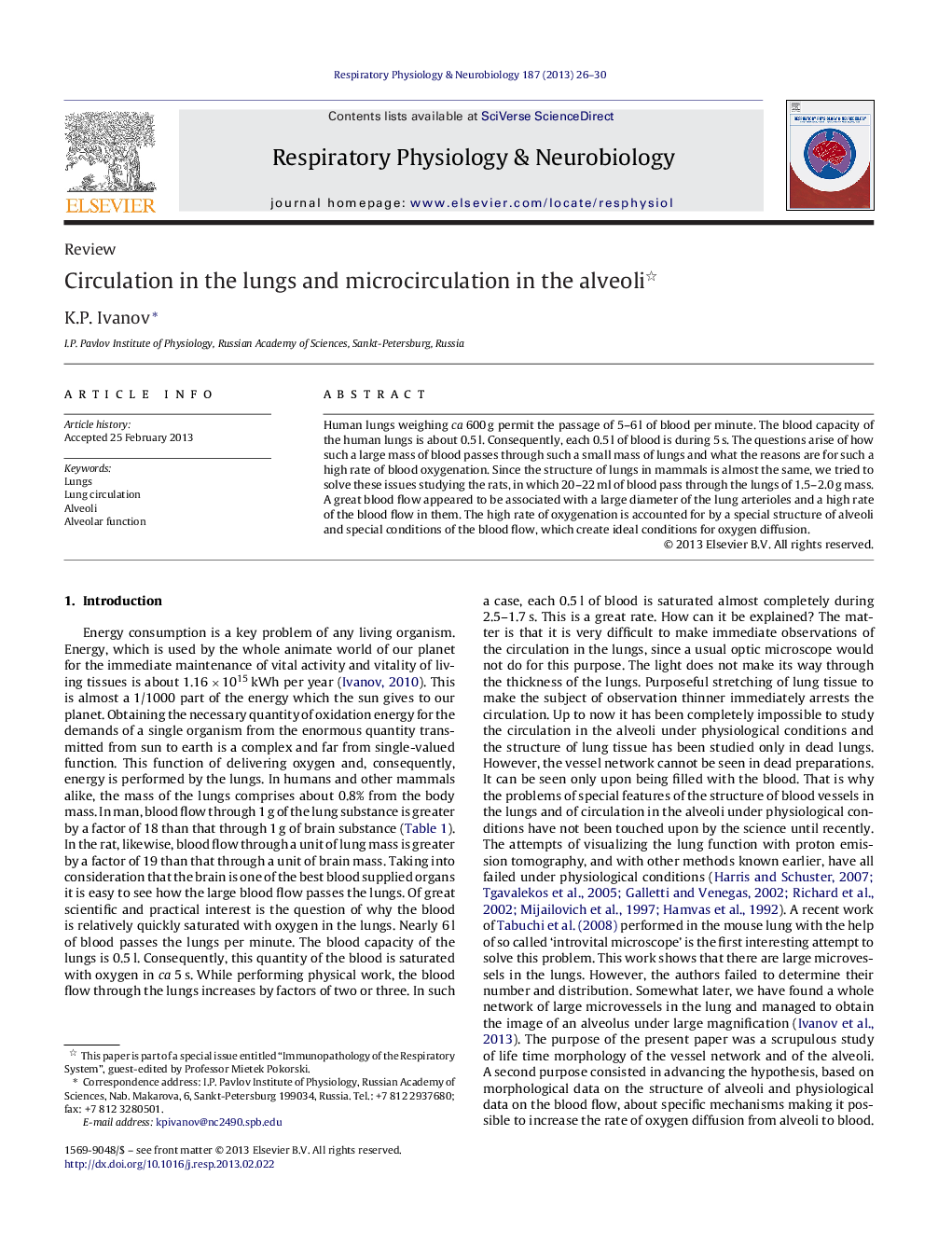| Article ID | Journal | Published Year | Pages | File Type |
|---|---|---|---|---|
| 2847169 | Respiratory Physiology & Neurobiology | 2013 | 5 Pages |
Human lungs weighing ca 600 g permit the passage of 5–6 l of blood per minute. The blood capacity of the human lungs is about 0.5 l. Consequently, each 0.5 l of blood is during 5 s. The questions arise of how such a large mass of blood passes through such a small mass of lungs and what the reasons are for such a high rate of blood oxygenation. Since the structure of lungs in mammals is almost the same, we tried to solve these issues studying the rats, in which 20–22 ml of blood pass through the lungs of 1.5–2.0 g mass. A great blood flow appeared to be associated with a large diameter of the lung arterioles and a high rate of the blood flow in them. The high rate of oxygenation is accounted for by a special structure of alveoli and special conditions of the blood flow, which create ideal conditions for oxygen diffusion.
► A network of large microvessels from 20 to 50 μm in diameter is found in the lungs. ► They surround each alveolus and supply it with a large amount of blood. Such a network allows up to 6 l of the blood to be passed per minute through the lungs up to 600 g in mass. ► A very thin layer of the blood is found in the alveoli (sheet flow), which is rotating continuously. This allows the blood oxygenation process to be abruptly accelerated. ► This is the new point of view on the circulation in the lungs and the blood oxygenation.
